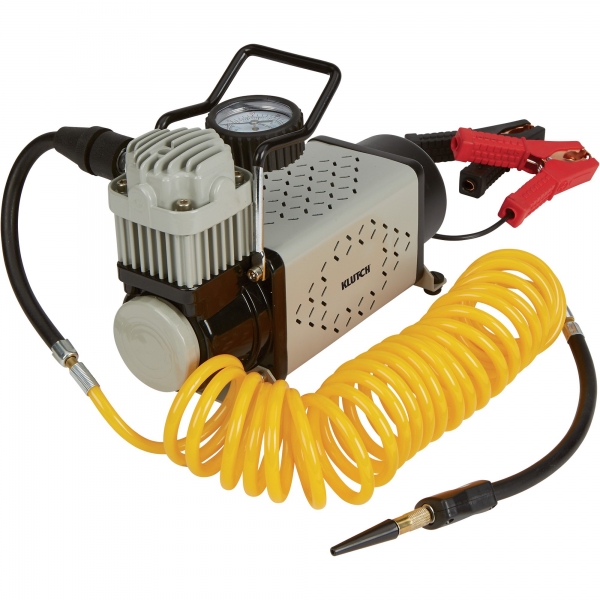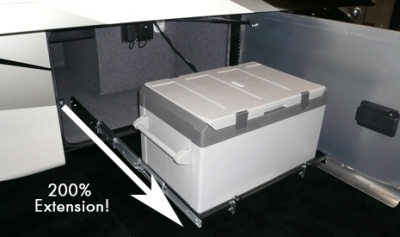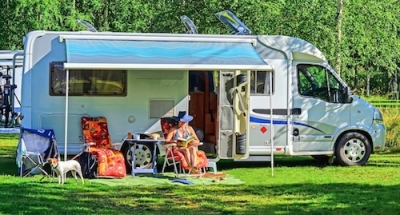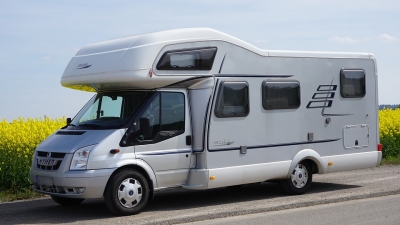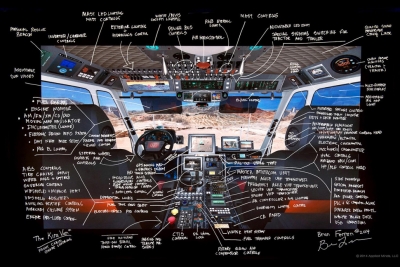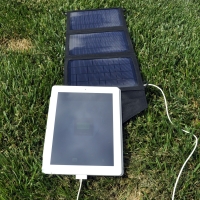Welcome to Crossing Creeks RV Resort & Spa in the heart of iconic Blairsville

RV Tech (35)
To protect your valuables when you’re away from your RV, any of several security measures—or a combination—can help without breaking the bank.
At Crossing Creeks RV Resort, you rest easy because the park has security, you know your neighbors, and they know you. But what about when you’re on the road?
Any of the following will enhance RV security:
Security System
The cost of an effective security system has dropped. It’s possible to get a motion detector that automatically alerts a monitoring service, police or you when it detects a break-in. The best systems, when they detect a break-in, place a cell call automatically.
The Tattletale, for instance, sits on a desktop or counter and is battery powered. It has a built-in motion detector and optional exterior detectors. Everything is wireless. It can be set to prevent false alarms from pets.
Price: $400, plus $21-$29 monthly for monitoring.
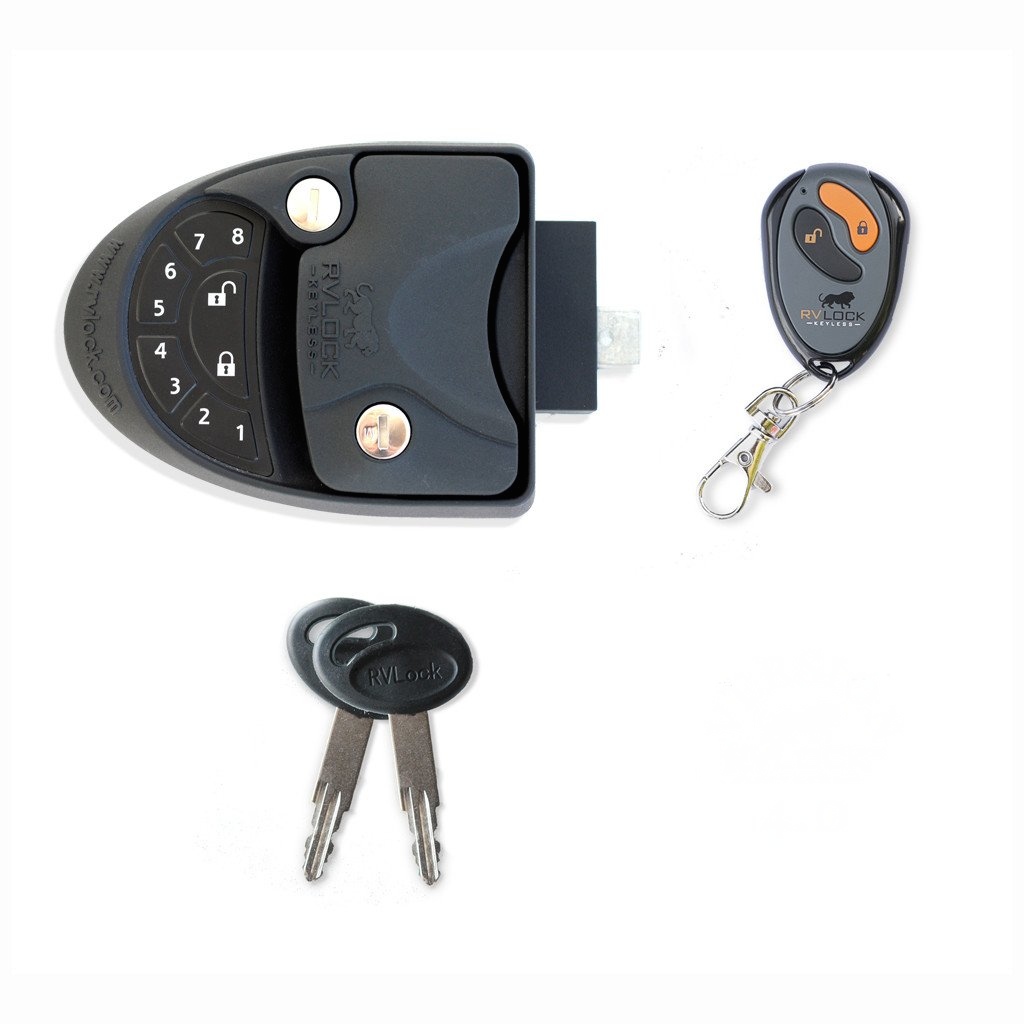
Motion-Sensing Exterior Lights
If someone approaches the RV, the infrared-detecting fixture senses the heat given off by the body and lights up. Intruders don’t want to be seen, and sometimes this is enough to discourage them. Installation and connection to the 12-volt electrical system is simple. Some models are battery-powered. Look for one that blinks to warn of a low battery.
Price: $30-$60
Solenoid-Operated Deadbolts
It’s not hard to come up with a key that will open another RV: Manufacturers make only a few unique key cuts and tumblers. That makes locks on an RV more vulnerable than those on your home.
Much stronger than standard RV door latches are solenoid-operated deadbolts. They also are more difficult to override. Solenoid deadbolts need electrical power. Some are hard-wired with contacts on the door and doorframe. Others use batteries, which you would need to replace from the inside yearly. Solenoid locks open either with a keypad on the outside of the door, or by buttons on a pocket fob—perfect when your hands are full of groceries. You set the combination, so the chances that an intruder can steal the code are slight.
You must choose a model that will fit your door.
Price: $150-250
A Dog
Sound corny? Don’t pooh-pooh it. A dog that is protective of its turf and barks at the sound of someone outside the RV actually is quite a deterrent.
He doesn’t have to be big and ferocious, but it helps if he sounds that way. A “Beware of Dog” sign doesn’t hurt. The downside: The interior must be cool enough so that the dog’s health isn’t threatened, and the time you’re away is limited by his bodily demands. Still, a dog is effective. You’ll have to train, feed and groom a dog, but he’ll repay you in companionship, in addition to guard duty.
Price: Variable; adopting cuts your purchase cost.

Wheel, Hitch Locks
If you’re worried about your RV itself being stolen, try a wheel lock. A boot type lock prevents the wheel from turning and blocks access to the lug nuts, the same way a boot prevents movement of a parking ticket scofflaw’s vehicle. A hitch lock prevents hooking up to your hitch ball.
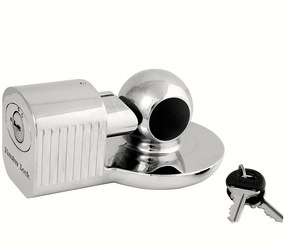
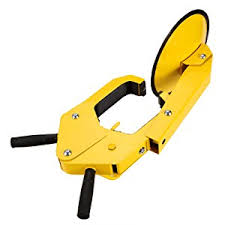
Price: $30-$60
In an RV, tools often are best if 12-volt powered, since the power circuit of your RV is 12-volt.
Here are a few good ones.
Compact vacuum
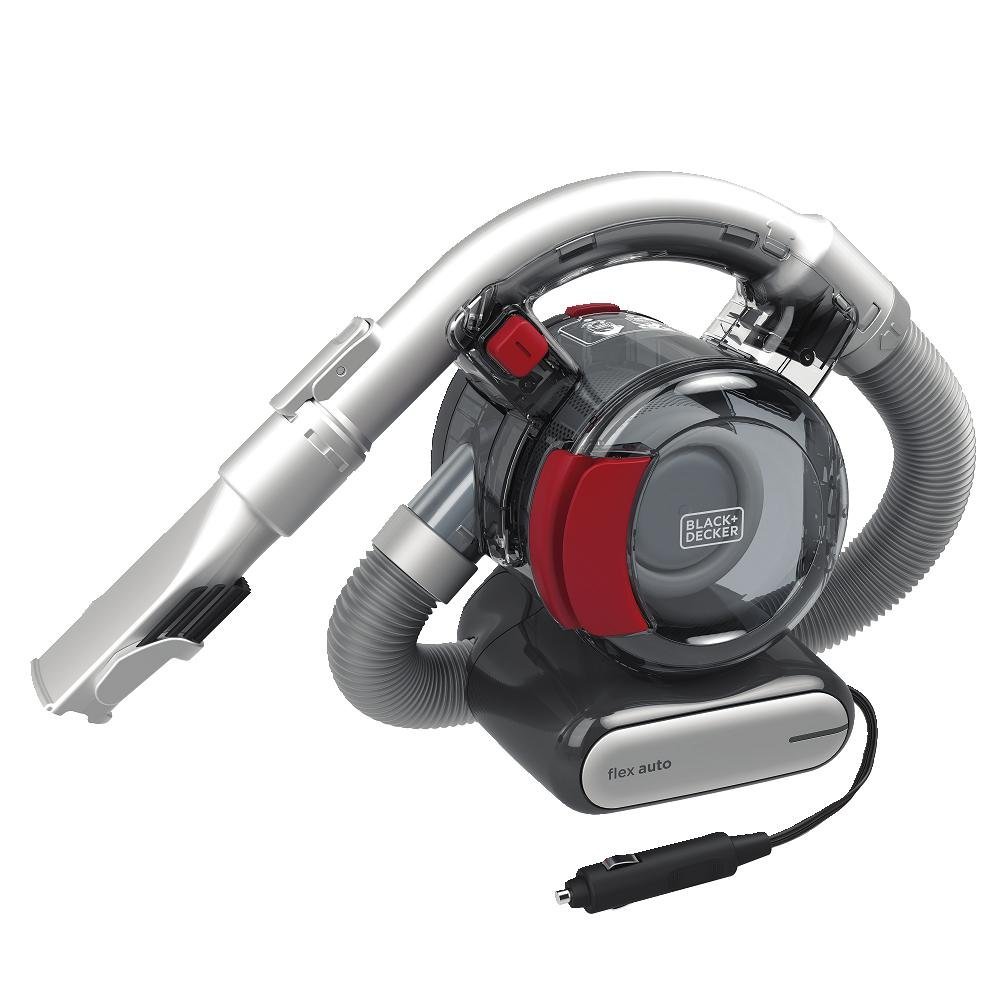
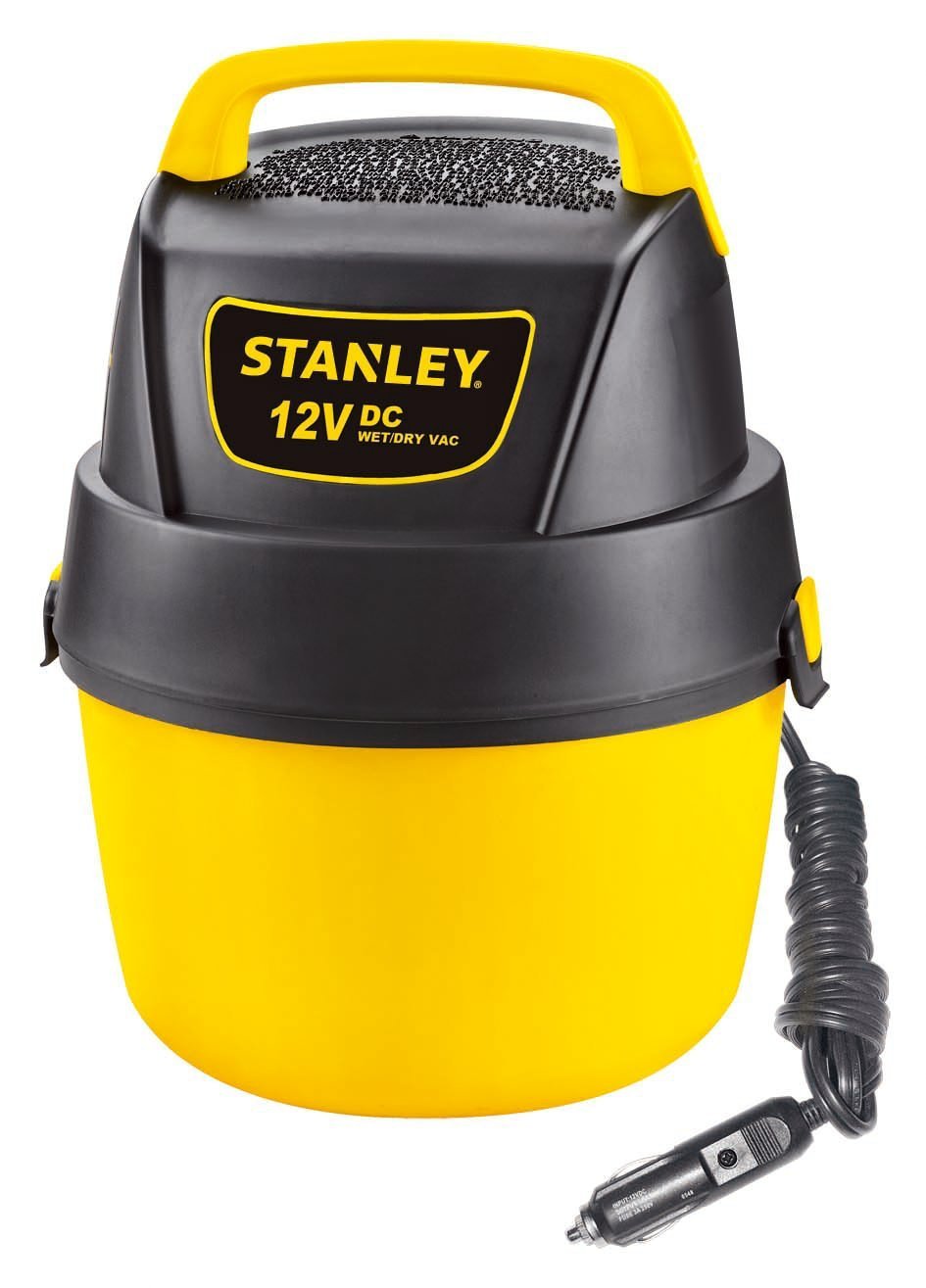
A 12-volt vacuum is a major convenience. Small, lightweight vacs are ideal when storage is at a premium. If you live in your RV only a few weeks a year, you’ll probably use the 12-volt vac to keep things tidy. Rely on a bigger vacuum that works off 110-volt house current and is stored elsewhere for thorough seasonal cleanings.
You can go a couple of different ways: A dry vac, such as the Black & Decker BDH1200FAV, or in case of spills, a compact wet/dry vac, such as the Stanley Wet/Dry 1-gallon 12-Volt Vacuum.
Price: B&D, about $35; Stanley, about $40.
Compact air compressor
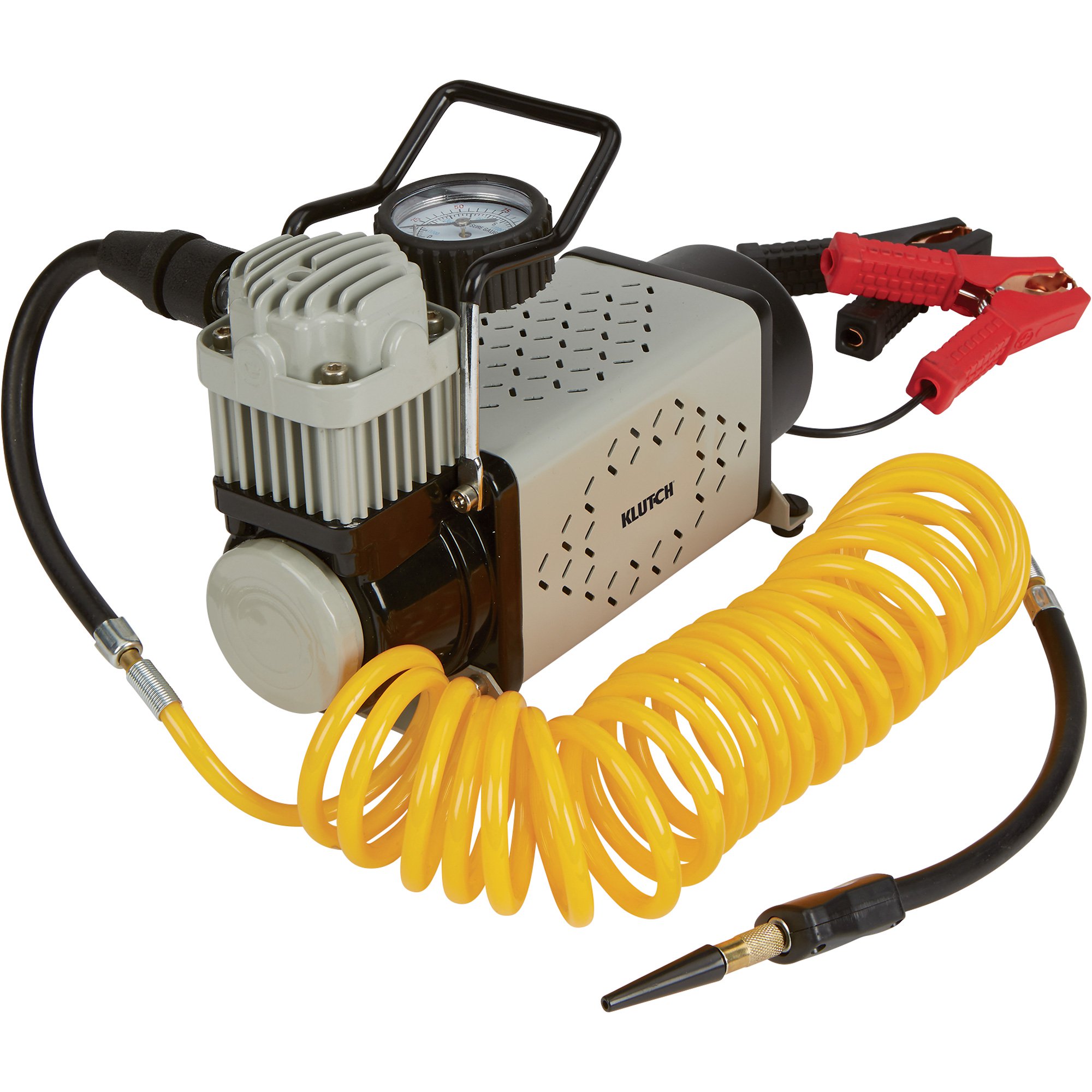
With the compressor, you can fill a compressed air tank or directly inflate a tire.
A compressor with a good compromise of capabilities, price and size is the Klutch 12-Volt High Volume Air Inflator 52509 from Northern Tool. It has a maximum 120 PSI capacity and 2.1 CFM airflow, both better than only slightly cheaper compressors. The cables with battery clips are 8 feet, and the coiled air hose extends to 16 feet, so you’ll be able to reach just about anywhere you have to. It can fill a tire on a full-size pickup in a minute, and it can run uninterrupted for 15 minutes. In its carrying case, it takes up about 1 cubic foot. Price: About $65.
Rechargeable spotlight
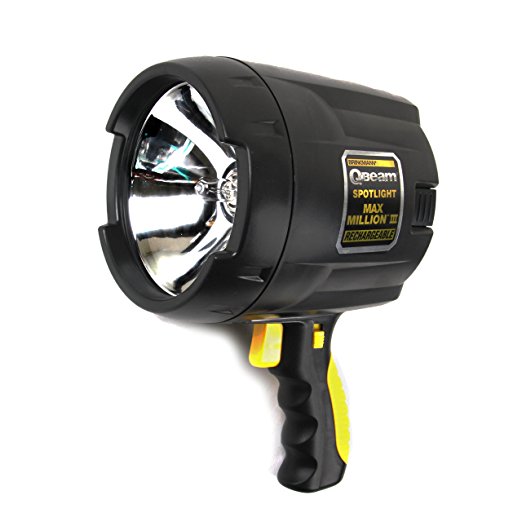
If you lose something tiny in the camper at night — an earring, maybe — or you have an emergency outside the camper, a really bright light helps. The Brinkman QBeam 800-2380-W handheld spot is rated at 1 million candlepower. It uses two lithium-ion batteries, so it’s rechargeable, meaning it doesn’t have to be tethered. It can be used while plugged into a 110-volt or 12-volt circuit. The batteries can be recharged while in the unit or while removed.
The plastic casing is tough, and the lens is tempered glass to resist breaking. The light and parts, including charger and cords, store in a vinyl bag.
Price: $69.
ThermoElectric Cooler

This is great if you have no refrigerator, or if your built-in refrigerator is too small. A 29-quart cooler can store two or three days of food to help keep you on the move without having to stop for restocking. Or it can hold 28 12-ounce cans; that’s a lot of beer and soda if the party ends up at your campsite. It cools to within 40 degrees of the ambient temperature.
The Koolatron Voyager Cooler doesn’t throw off a lot of heat. You can use the well-insulated fridge as a chest or as a vertical unit. The plastic casing cleans easily. It measures less than 18 inches square and weighs 13 pounds.
Price: About $120.
Some things to think about: If your product comes only with a cigarette lighter plug, or only with alligator clips for connection to a car battery, pick up the other type and an extension so you’re ready for any use. An air tank will fill a tire faster, plus it can be used with a compressed air hose to blow things clean, so add a tank if you don’t have one.
Slideouts that enlarge an interior room on your motorhome or trailer are almost a requirement these days, but there’s another kind of slideout that makes RV living easier: a sliding cargo tray for an external storage space.
A sliding cargo tray is so convenient you’ll wonder why you went without one.
A storage tray pulls out on rollers and what looks like a pair of giant drawer glides. Once it’s fully extended, the pullout provides unimaginably easy access to whatever it’s holding. There is the tradeoff: Better access will cost you a little storage volume.
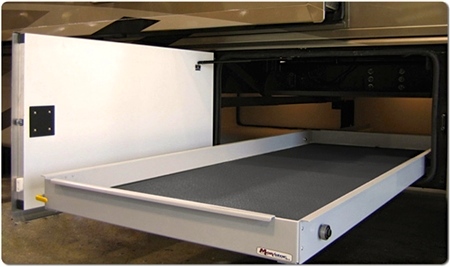
Sliding cargo trays come in different materials, sizes and strengths. They are sized for small cubbies, your RV’s largest external storage area, or cargo holds in between. With the variety of sizes, you can put a slider in half of your biggest storage area and leave the other part without one.
Put whatever you want on a slider, especially if it’s one of the heavy-duty models. The common-sense approach is to put frequently used articles on the slider, while leaving seldom-used items on a stationary surface. So, things like outdoor picnic tables and convenience tables, chairs and grills can go on the slider because they’re coming out almost as soon as you park and level off.
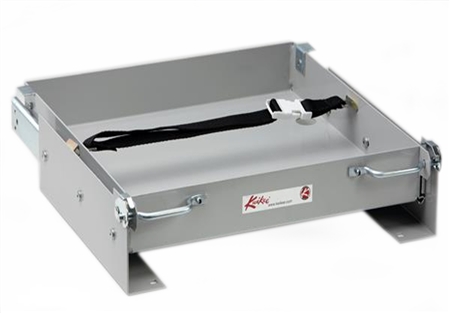
Sliders can ease maintenance. Battery arrays, your generator or an inverter can be placed on a slider, which makes troubleshooting a breeze. You may have to replace standard cables with longer examples so that they will not restrict the sliding action.
You can actually mount a gas grill and use the slider as a pullout cooking station. Think of the fold-down grills that are all the rage on new Class A and Class C motorhomes. Some have the grill only, others the grill and a flat work surface on one or both sides, and some a sink.
A grill mounted to a slider may not be as fancy, but it can be as functional. Metal sliders are the material of choice for grill-mounting. Full-width sliders allow space for cooking utensils, spices, sauces and plates in addition to the grill. You could also mount a small refrigerator/freezer next to your grill.
The nice thing is that you don’t have to lift the grill into place repeatedly; just mount it to the sliding tray once and pull it out for use, then slide it back after cleaning. Measure the height, mount a wooden table or box, then the grill to that surface. Without the need to lift your grill repeatedly, you just might be tempted to get a more elaborate grill that you once thought too impractical.
Small items are best placed in handled plastic tubs to keep them from scattering during travel. Just slide out the tray, lift out the tub and carry the contents to the spot where they’re needed. A good example is all of your cleaning products, including a rolled up hose and brushes.
You can buy sliders at RV dealers, or just slide over to your computer and order online. Expect to pay $250 to $750, depending on size and quality. If you’re handy, you can also buy materials and build one yourself. Find glides at the same sites that sell the finished products.
Here’s How To Keep RV Awnings Looking Good and Working Well
Written by MattNothing on your RV says “relaxation” more than your RV awning. You press a button to open it, take a seat in its shade, and probably — quite often — dine under it. And when you’re ready to hit the road, you just press a button again to retract it.
But even this relaxation station requires maintenance. Moving parts need lubrication periodically. And the fabric (usually woven vinyl) requires cleaning, removal of mildew, and application of a sealant/protectant — especially before long-term storage.
Clean the Awning First
You’ll want to clean your awning first. Always check your owner’s manual to make sure you are using chemicals that won’t harm it. Mildew builds up on an awning after it gets wet, and sometimes when it’s rolled up. So it’s good to use a product that contains bleach or a mildew fighter. An alternative is a mixture of a ¼ cup bleach and ¼ cup dishwashing liquid in a 5 gallons of water.
Things you’ll need, all of which you can buy at a home center:
- Old clothes and hat (bleach spots clothes and hair)
- Cleaning agent
- Bucket
- Hose and running water
- Applicator (garden-type pressure sprayer with a hand pump and resistance to damage from bleach)
- Long-handled soft-bristle brush or sponge
- Hand sponge
- Reading material (yes, really)
- Long-handled paint roller
- Sealant/protectant, such as 303 Products
Follow these steps:
- Open your awning.
- Check for color fastness on an area that’s out of view — near the top, where a strip of the fully extended awning faces the side of your RV.
- Mix the cleaning solution and pour into the sprayer.
- Hose down the top side of the awning. Use a garden sprayer to apply the cleaner. Hose off the bottom of the awning.
- Roll the awning to its travel position and wait 10 to 15 minutes while the solution works.
- Find some shade and read. (Didn’t I tell you?)
- Open the awning again. Rinse thoroughly with the hose and inspect. Scrub stubborn stains with the brush or sponge. If the awning appears still to be dirty, repeat Steps, 4, 5 and 6. Really dirty awnings may require a third application.
- Re-open and let dry. Once the awning dries, use the roller to apply the sealant/protectant.
- Allow protectant to thoroughly dry (sometimes up to 12 hours, less in direct sunlight), and keep it free of water until it does.
Awning Lubrication Ensures Smooth Operation
Now it’s time to lubricate. You’ll need two things:
- Silicone-based spray lubricant
- Rag or paper towel
Follow these steps:
- While your awning is open, spray the lubricant on moving parts: hinges, the ends of the awning roller, support arm pistons. Wipe off drips and runs with the rag/paper towel.
- Open and close the awning several times so the lubricant works in. Wipe any excess lubricant.
That’s it. You are now ready for weeks — maybe months — of enjoying your awning before having to do this again.
Until your next major cleaning, use a sponge to spot-clean soiled areas, such as bird droppings. If the awning gets a lot of use, do intermittent cleanings with a non-bleach cleaner, such as Simple Green. It’s not as harsh on the fabric. This biodegradable, natural concentrate eats through grease effortlessly.
If you just purchased a new RV and you’re enjoying your time on the road but you feel that something is missing, well you may want to think about an upgrade.
When you’re on the road for a long time, you just start feeling that you're missing creature comforts from home. We made a list for you of the best 10 upgrades you may want to consider to make the RV experience more enjoyable.
Extra Battery Capacity
This upgrade may not be seen as important but imagine yourself excited for a new excursion to a National Park but with no electric hookups near the area. If you’re considering staying at an RV Park you can leave in the morning and be back in the evening but if you want to stay out exploring for few days, you really need some extra power. This can be accomplished by purchasing extra batteries and linking them to your power supply system As an alternative you can also install a solar battery charging system to the vehicle.
Vent Fan
Driving in the sun all day can get hot, even with the AC pumping. If the sun is beating down on you it can be even worse. In addition, the RV may retain the smell of a recently cooked meal or even the smell of your wonderful pets. A roof vent fan is the simple solution. There are many options in terms of price, size, and complexity. The most well known brand is Maxxair.
TV Signal Booster
If you really don’t want to miss your favorite tv show while on the road and you’re worried about the constant weak reception of your current antenna, you may want to consider a signal booster. It can help you increase the signal strength, the channel reception, and the image quality. The Wingard Wingman Booster is our choice as it’s easy to install and it works immediately.
Digital Thermostat
If you’re finding yourself having trouble sleeping due to summer heat or just finding the perfect temperature inside your motorized home, you may want to think about a digital thermostat. The precise control of the temperature is life saver when you’re on the road for more than few days. Also, it doesn’t require you to invest too much money as there are many cheap and reliable options on the market.
LED Lighting
If you’re looking for a better, longer lasting source of light then LED lighting should be the first option to consider. This comes with many advantages such as improved visibility, safety, and a modern look.
When purchasing LED lights be aware that if you go with the cheapest option. You may find yourself with a low-quality product with no built in regulation circuitry and a not so bright color. To start thinking about it, you may want to take a look at http://www.starlightsinc.com/.
Brand New RV Technology: The Latest Gadgets and Gizmos
Written by Super UserWhen you decide to commit to an RV lifestyle, you might want to explore all the latest gadgets and gizmos that you can add to your new home with wheels. Having some of these fun add-on's can make life much easier in your smaller, but mobile place. Alright, some of these RVs aren't even that small! They are way bigger than most people's one-bedroom apartments. Even if you are in a stationary, luxury camping location like Cypress Trail RV Resort in Fort Myers, Florida you’ll want to invest in some of this newer technology to make your RV experience more enjoyable. Technology is truly making the RV experience better all around for everyone. Some of these items come in newer models of RVs, or you can have them as selectable options when you customize your vehicle from start to finish. Others you can purchase aftermarket to add to your already existing RV. It’s all up to you on how you want to outfit your motorhome to make it the perfect place to call home.
Whether you are an old hand or a novice looking up possibilities, RV adventuring is greatly enhanced with the aid of a few smart gadgets.

